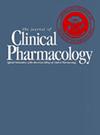基于生理学的药代动力学建模和模拟在药物和生物治疗药物开发中的作用。
IF 2.3
4区 医学
Q3 PHARMACOLOGY & PHARMACY
引用次数: 4
摘要
本文章由计算机程序翻译,如有差异,请以英文原文为准。
Role of Physiologically Based Pharmacokinetic Modeling and Simulation in Enabling Model-Informed Development of Drugs and Biotherapeutics.
Model-informed drug development (MIDD) strategies and associated quantitative approaches have enhanced the design, development, and benefit-risk assessment of therapeutics. With advances in our understanding of disease biology and pathophysiology, the complexities of mechanisms of action of emerging therapeutics are steadily on the rise. Taken together with the growing diversity of therapeutic modalities ranging from traditional small molecules to complex genetically engineered cell therapies, clinical use of contemporary therapies demands commitment to integrative “systems” approaches that iteratively exploit the totality of drug-, disease-, and population-level knowledge to guide objective decisions. The inclusion of MIDD-related performance goals in the Prescription Drug Use Fee Act VI is a strong testament to the interest and commitment around the use of novel methodologies to facilitate the conduct of efficient clinical trials. The need for a holistic approach to advance the vision of MIDD and the impact of MIDD-based approaches on dose optimization, informing clinical trial design and providing supportive evidence of efficacy, has also been discussed. 1,2
求助全文
通过发布文献求助,成功后即可免费获取论文全文。
去求助
来源期刊
CiteScore
5.10
自引率
3.40%
发文量
176
审稿时长
2 months
期刊介绍:
The Journal of Clinical Pharmacology (JCP) is a Human Pharmacology journal designed to provide physicians, pharmacists, research scientists, regulatory scientists, drug developers and academic colleagues a forum to present research in all aspects of Clinical Pharmacology. This includes original research in pharmacokinetics, pharmacogenetics/pharmacogenomics, pharmacometrics, physiologic based pharmacokinetic modeling, drug interactions, therapeutic drug monitoring, regulatory sciences (including unique methods of data analysis), special population studies, drug development, pharmacovigilance, womens’ health, pediatric pharmacology, and pharmacodynamics. Additionally, JCP publishes review articles, commentaries and educational manuscripts. The Journal also serves as an instrument to disseminate Public Policy statements from the American College of Clinical Pharmacology.

 求助内容:
求助内容: 应助结果提醒方式:
应助结果提醒方式:


